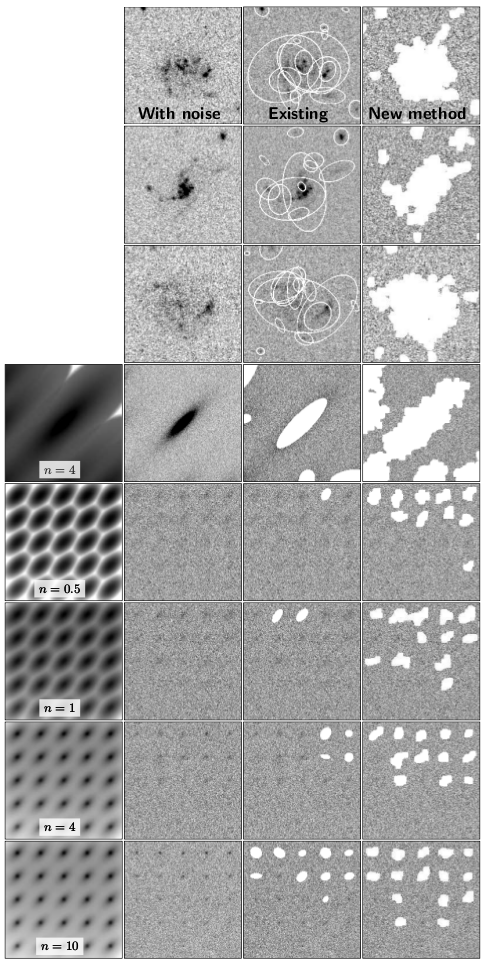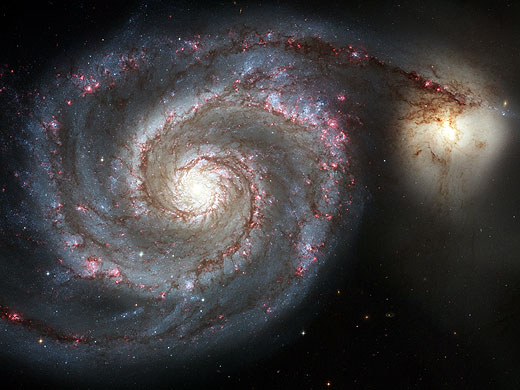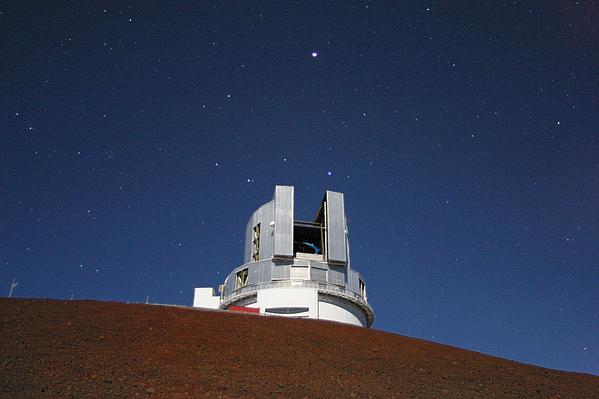My research
I have separated this section into two parts; for those who are not familiar with Astronomy and for those who are. My previous research and writings can be found in my blog.
Introduction (for non-astronomers)
Galaxies are some of the most beautiful, diverse, and if you ask me, most interesting systems in nature. They are very far from us; the closest is about 2.3million light years away, and through a gravitational bond, they form the clusters and groups of galaxies which are the largest structures in the universe.
The universe seems very old (~13.7 Billion years old) if we compare it with the period we have actually taken pictures of the universe (~100 years). So we have just observed about 7 billionth of the life time of the universe! Comparing with a human being's life time (supposing an average of 80 years), this means that we are trying to understand the life of a human (Footnote 1), only by looking at it for about one fifth of a second!!! We all know how a human evolves during it's lifetime, we have experienced it with our very existence, and so we know that if an alien were only to have 1/5th of a second to look a human, it's guess of a human's biological growth from childhood to it's current stage would not be too much like how it actually is! The same amount of error applies to Astronomers trying to look at the sky and understanding the evolution of our universe.
But compared to the alien that can only observe one human being for a fraction of a second, Astronomers are much more lucky; we have far more than one galaxy to observe (Footnote 2) in the whole sky (Footnote 3) and the light from the galaxies reaches us from different epochs of the history of the universe. The quantitative basis of this second fact relies on the current "Dark Energy - Cold Dark Matter (ΛCDM)" Cosmological models!
Going back to galaxies, and why I am so interested in them; according to our current theories, the time scales galaxies show changes in their structure is less than the age of the universe and since they are distributed all over the sky and we can observe them in different epochs of the universe's evolution, they are one of our best means to create a connection between the current (local) and the very early (far) universe.
Galaxies display a very rich and diverse set of shapes and sizes. This appears to be due to both internal and external interactions. Unfortunately, as much as we have tried to observe them more and more, there appears to be no clear cut off to their light profiles. This makes the detection and subsequent analysis on galaxies extremely hard. My research so far as a PhD student in Tohoku University Astronomical Insitute was to find a new method to detect and measure the properties of galaxies that is less affected by thier various shapes and sizes. See below for more information.
Methods: Detecting the faintest signal
I have been successful in defining a fundamentally new method to detect very faint and diffuse signal in noise. Over the last 35 years, extra galactic astronomy has been heavily dependent on one method of object detection and photometry in an image. The method poineered by Kron (1980) and which is currently implemented by SExtractor's MAG_AUTO. Nearly all extra-galactic research on near UV, optical and near IR images is done using this one method!
The old method relies on several assumptions about the light distribution of the to-be-detected objects. For example to detect the faintest parts of the object (that are below its necessarily high threshold) it has to assume everything is an ellipse. It also needs to know the Point spread function of the image prior to analysis for an "optimal" result. Since all the galaxies in an image can't satisfy those assumptions, existing methods will thus miss or in-accurately measure their properties. The faint, outer parts of galaxies are infact one of the most interesting parts of galaxies, precisely because they are not an ellipse. Since they are very weakly bound to the center of the galaxy, they keep remnants of possible previous merger events for example. Therefore, since the existing methods heavily rely on prior knowledge of the signal to detect signal, we can classify them as signal-based detection methods.
My new approach solves nearly all these problems. It is published in the Astrophysical Journal Supplement Series (free version: arXiv:1505.01664). In short, through a new method, a very low threshold (far below the sky value) is defined and using the ambient noise as a reference, I was able to accurately detect objects with any shape at levels below the mean of the noise. Several examples are displayed below, see the following text for an explanation of this figure.

The second column of each row shows the input noisy data. They were fed to both the existing method (implemented by SExtractor) and the new method (called NoiseChisel). The first column shows the image prior to adding noise. Since we do not know how real data look without noise, the first column is empty for the top three real examples. In mock images, we make the profiles our selves, therefore we know exactly how the profiles look prior to adding noise. The mock images are all shown in the logarithmic scale to emphasize their faint wing extent.
For the real images using the existing technique, each detection is displayed with a thin elliptical annulus surrounding it. You can clearly see that the results of the existing method on such amorphous (not having a clear shape) objects is very far from what they appear to be when we look at the image. For example the spiral arms of the second real object are broken up into multiple detections! The existing method failed to see them as part of the main object. The same goes for the other two real objects. In the last column the results of my new approach are shown to be complately masked. You can see how accurately they were detected with any shape.
In the mock images, Sersic index (n) is one of the important parameters of the Sersic profile. In short, if all the other parameters are fixed, n shows the shaprness of the profiles. So as n increases, the profile becomes sharper. You can see this sharpness increasing in the bottom four rows. The first mock image shows 6 identical large mock profiles with n=4. 5 of the profiles are positioned just outside the image on the bottom and left edges. Their wings can be clearly seen on the edges. Again, it is clear how the existing method is completely hopeless in detecting such objects. Such cases occur often in astronomical images.
The last four rows show very small profiles, all with the same parameters except their signal to noise ratio in each row. This can be better seen on the second column (after adding noise). The faintest profiles are on the bottom left and the brightest are on the top right. It is clear that as n decreases. Because of the very high thresholds that the existing methods need to assume, they are extremely poor in detecting faint and diffuse profiles. However, thanks to the very low thresholds used by NoiseChisel, we are able to detect such objects much more accurately.
For more details please read the full NoiseChisel paper. NoiseChisel is distributed as part of GNU Astronomy Utilities. This is the first astronomical software that has been evaluated and endorsed by GNU. I hope that with the help of other astronomers we can extend it soon to be a complete package for all aspects of astronomical data analysis and processing. I am now working on some scientific applications of this new techinque. They will be published soon.
Galaxy evolution
As discussed above, the new tool is exceptionally accurate in detecting the faintest and most irregularly shaped galaxies. I am currently using it to study the evolution in the galaxy UV luminosity function, to see how the most distant galaxies first started to re-ionize the universe after the cosmic "dark ages" in a period called "cosmic dawn" or rerionization. All our current knowledge of this period is based on the old signal-based approach to object detection. So this research will be the first time that these extremely distant and young galaxies have been studied with a new eye (not new telescope, but new technique). The results will be published soon, so stay tooned ;-).
Footnotes
- to make things easier, just consider biological life and neglect psychological or social life.
- The number of local galaxies observed in recent surveys (e.g. SDSS) is in the order of Billions.
- Since we are inside a spiral galaxy (the Milky Way) our selves, the disk doesn't let us see outer galaxies in those portions of the sky that the disk covers.
Updated: October 8th, 2015


The 8.2m Subaru Telescope, Mauna Kea, Hawaii

Tohoku University Astronomical Institute, 6-3 Aramaki, Aoba-ku,
Sendai, Japan, 980-8578
akhlaghi :a:t:
astr.tohoku.ac.jp, Office: Physics A; 838, +81-80-3335-9474